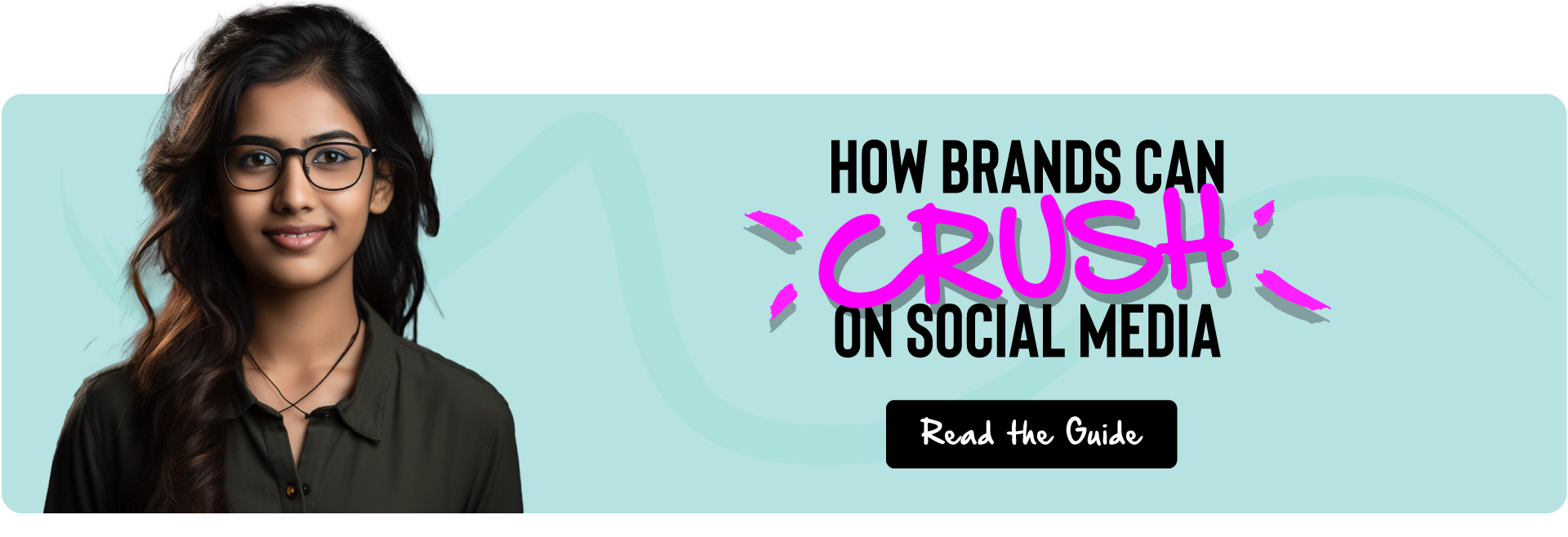
Your company needs content, but you’re struggling with creating a content distribution plan for video and blog content. You’ve come to the right place.
A well-thought-out content distribution plan is crucial for maximizing the reach and impact of your blog and video content. This is a topic I know a lot about – I was the SEO & Content Manager for many years at large companies like SAP and Best Buy and many others, and continue to help clients with this problem.
Here’s a comprehensive plan that you can tailor to your company’s specific needs:
1. Understand Your Audience
Quick tips:
- Define your target audience and create buyer personas.
- Research where your audience spends time online.
This may sound obvious, but I would start with a basic question – are we making content that our audience wants or needs? Too often companies create content that is all about them, I call this promotional or transactional content. Whereas the vast majority of your content should be more educational (how-to, thought leadership, etc.), and entertaining (hot take on a current topic, forecasting upcoming trends, etc.).
Gary Vee talks about this in his book – Jab, Jab, Jab, Right Hook – in other words, always think, how can I add value, not how can I extract value.
2. Create a Content Calendar
Quick tips:
- Develop a content calendar to plan and schedule your blog and video content.
- Consistency is key – establish a regular posting schedule.
Once you identify your audience, figure out where they consume content, and the types of content they like, next is an extensive planning stage.
Figure out how much content you can produce given your time, budget, skillset, and where you are likely to make the most impact. If you are just starting out, it can be overwhelming to produce content for various different channels and mediums. So you may want to stick with one or two that you can manage reasonably well. The content on one platform may not be appropriate for another so just publishing the same thing across different platforms may not be the most effective approach.
Planning a content calendar is really about determining your content pillars (the main topics you want to cover). So for example, if you are running a fitness app, your pillars may be: weight training, cardio training, diet, rest & recovery, and mindset. I would suggest sticking to 3-5 pillars. Within those pillars, you can go wild with ideas and figure out what keywords are related to each of those, what is the search volume, what is the search intent, and so on.
You can use various tools to research this from Answerthepublic, Ask Socrates, Google Keyword Planner, Ahref, TikTok and YouTube Search… Ideally, you want to find keywords that a lot of people are searching, but has low keyword difficulty. In other words, keywords that you are likely to rank for in search. You may want to test different titles in tools such as Uber Suggest, and even search that topic to see what kinds of content comes up and how you can make it better.
There’s an entire SEO strategy that needs to be deployed within the content planning as well as the content creation stages, which I won’t go into here.
You may also want to categorize your content based on persona or funnel stage. Not all your content needs to have high search volume. There may be a topic you want to create content around because it helps people convert on your site such as case studies or thought leadership pieces, or retain them as customers such as how-to and quick tip guides.
Once you do this exercise, you can plan out the next few months of content in a spreadsheet. You can assign due dates, owners, reviewers, pillars, stages, and other tasks such as graphic design and editing.
3. Develop a Blog Content Distribution Plan
Quick tips:
- Share your blog posts on social media platforms (Facebook, X, LinkedIn, Instagram).
- Utilize email newsletters to reach your subscribers.
- Participate in relevant online communities and forums.
- Consider repurposing blog content into infographics or slides for sharing on visual platforms like Pinterest or SlideShare.
Once you’ve defined your target audience and the kinds of things they like (I didn’t go into how to actually do this, but if you are interested, let me know), I would research where your audience spends time online. Too often we write content and just post it on our company page or even personal page on LinkedIn. But it hardly ever reaches our audience organically.
There are a few strategies to overcome this. Perhaps the fastest way is through…
Paid promotion – put a little ad spend behind your content to “boost” it. It doesn’t have to be much, $20 – $100 per post can often be enough to guarantee it’ll be put in front of the right people. Again, going back to what I first said – is it something the audience would care about? Does it have an engaging title? Does the cover art looking interesting and appealing? Lots to consider here. Content that continues to work well using paid distribution can get more money and optimization, and content that doesn’t do well can be revised or abandoned.
Too often when companies hit publish, they move onto the next one. They hope and pray that the post will organically take on a life of its own and go off into the world to do what it needs to do. Sadly, this is rarely the case. Once you hit publish, that content should go in a spreadsheet and you should set some time aside every month to monitor what each post did in terms of impressions, engagement, and so on.
There are many other things you need to do as well such as uploading it to Google Search Console, SEO optimization, rescheduling, A/B testing, and planning what happens next.
Repurposing content is huge – can we turn this thing into something else (or better yet, 10 other things)? Could it be a video, or a podcast topic, or a webinar, or an infographic, or can we post it on Medium or LinkedIn Pulse, or create social posts from it…? Essentially you want to tailor your content for each platform, considering the format and style.
Partnerships and Collaborations can be a great way to amplify content – your partners can post it on their channels and you could do the same for theirs. Partners are those who share a common audience but are not competitors.
Newsletters can be a great way to distribute content, but too often companies neglect the most important part – collecting emails. There is a whole strategic initiative in and of itself with this, which I won’t go into. I will share a saying in the marketing world, which is – ‘don’t build your house on rented land’. The idea here is to own your audience and have a way to contact them without relying on another platform.
Community – If you can create a community around your brand, whether on social media, through a forum, or some other channel, and encourage user-generated content and testimonials, that would do three things for you:
- allow your content to be consumed, which is what you want
- you don’t have to make it, which saves you time and money
- since it’s not coming from you, it may lend a lot or credibility
Another concept to consider is zero-click content. If you’re not familiar, it’s the idea of just posting the content in your feed, say on LinkedIn, and not just the link to your blog. Allow people the opportunity to consume natively on the platform instead of leaving the platform to read your blog, which almost never happens. The algorithm will reward you for this and punish you if you are taking people off their platform.
4. Develop a Video Content Distribution Plan
Quick tips:
- Optimize video titles, thumbnails, descriptions, and tags for search engines.
- Share videos across other social media channels.
- Embed videos in relevant blog posts.
- Collaborate with influencers or other creators in your space for cross-promotion.
In terms of long-form video content, that needs to be chopped up into smaller clips for Reels, YouTube Shorts, and TikTok videos. There is a whole methodology here and some amazing tools you can use, but in the interest of the length of this post, I won’t go into too much detail.
Consider this – there are two ways all people shop and consume, whether content on Netflix or YouTube, online shopping, or grocery stores. The either:
- Browse & discover
- Search & find
They either know what they are looking for, or they are browsing.
This is why short form content is key. People may not be looking for your content, but the algorithm will put it in front of them if they are the right audience. If you focus on the hook – the opening 2-3 seconds, and keep them around long enough, perhaps they will follow you, or take another action such as go to your website.
5. Leverage Social Media
Quick tips:
- Identify the social media channels most relevant to your audience.
- Tailor your content for each platform, considering the format and style.
- Use social media scheduling tools to maintain a consistent presence.
A lot can be said here, but I’ll try to be brief. As mentioned, you need to consider where your audience is, and what you can reasonably manage. Once you post, be sure to reply to any comments, this is not only polite, but also helps the algorithm push it out to more people. In fact, some people even encourage discussions and ask for feedback in their posts. You may even want to do a poll or survey on social media to involve your audience, or even run a contest or giveaway.
When posting on LinkedIn, try to get your staff, especially the CEO, to post on their social pages, as well as post in groups where your audience hangs out. One time I posted something about SEO on my LinkedIn page and it got roughly 200 impressions and maybe one or two likes. That’s because my LinkedIn connections don’t care about SEO as much as I do. I posted that same post in a marketing group and it got 10,000+ impressions, hundreds of comments and likes, and several new connection requests… That’s the power of targeting.
Also, just because you post something once, it doesn’t mean you can’t post it again. You can reschedule it, change the title, change the feature graphic, etc. I call this the 3 Rs – Repost, Remix, and Repurpose. There are structures and hooks that a lot of people use, which I won’t go into.
I don’t really think about X as a meaningful distribution platform. I haven’t seen much traction coming from there. I think it’s because the mindset is all about quick, short bursts of thoughts and information – I’m not sure people are really leaving X to read a long-form blog content or watch videos. There isn’t a whole lot you can say in 240 characters. It has video capability, but it’s not set up like the other video platforms (currently).
As for TikTok, I wrote an entire article on How B2B Companies Should Use TikTok. Some stuff in this article is outdated, for instance, there’s a new trend toward more natural, unpolished videos – even long-form. This overly produced and polished videos are not performing as well anymore. Landscape videos are becoming more of a thing that TikTok is encouraging (still unclear why).
TikTok has changed from even a year ago. You can no longer description or hashtag your way into a million+ views. Time of day matters less than it used to. There’s just more competition now. The TikTok algorithm is REALLY good at finding people and putting content in front of them. So it goes back to making the right content and letting the algo work its magic. It seems like consistency is still really important, and just because a post didn’t do well one time, it doesn’t mean you can’t repost it. I have personally seen two videos perform vastly different even though they are the exactly the same.
If TikTok live is not a part of your marketing strategy, then you may be missing a huge opportunity.
- Post often on TikTok to build your following
- Go live at least 3 times per week, stay on for 20 minutes or so
- Share your expertise, talk about your industry, trends, challenges, stories, answer questions (but don’t sell)
The algorithm will notify all your followers AND non-followers who may be interested. This is huge. Other platforms don’t do this.
The longer you stay on, the more people will show up.
Have a link in your bio that leads to your VSL or landing page.
As you can see, we are barely scratching the surface on many of these things. Remember to adapt and refine your plan based on the evolving needs and preferences of your audience. Regularly measure the performance of your distribution efforts and adjust your strategy accordingly.
If you need help with your content marketing, please reach out.
Related Posts

Creative Direction vs. Art Direction vs. Branding: What’s the Difference?

Should you Modularize (or Productize) Your SaaS Product

What Happens When AI Takes Over Everything?

We’ve Already Reached Near Peak SaaS Fatigue, and It’s Going to Get MUCH Worse

Beware of These Sneaky Sales Tactics: How Salespeople Try to Trick You

Your Audience is Not Your Audience
Need help with your marketing activities?
If you’re looking to make a move with your marketing, reach out to us. We are priced fairly, we’re straight shooters, and are the very best at what we do.


